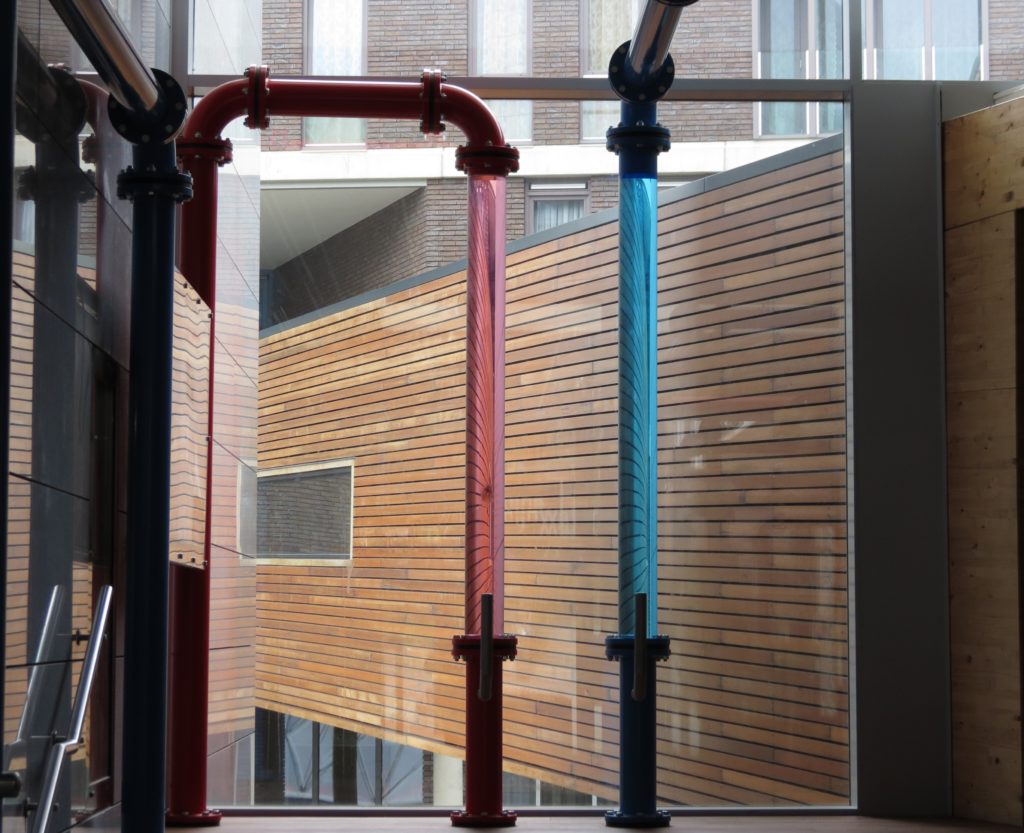Designing a mobility strategy for energy
A plain English guide to Smart Sector Integration
What’s the first thing you do when developing a mobility plan for a city? You look at a map. Lots of maps, ideally. You look at the departure points, destination points, flows, bottlenecks, projections for the future and try to come up with a way to smooth everything out as much as possible, as quickly as possible and for as little investment as possible.
The same is true for energy – in this case – heating and cooling.
When we talk about ‘How to design smart sector integration’ what we are really trying to do is come up with a mobility plan for energy.
Where do we have excess energy? Whether from data centres, industry or supermarkets? Next, where do we need heat? In homes, businesses, schools, transport, etc. And what other local potential sources of energy and energy storage exist that could be efficiently used like abandoned mines or deep geothermal?
So we start with maps. In terms of a ‘no regret’ option in designing smart sector integration mapping out a city’s heat needs there is no better, cheaper, or more valuable option than mapping your heating and cooling.
Hot Maps has been in testing the last couple of years in seven pilot cities. It’s an open-source, user driven, planning software that can be used in all EU countries.
But mapping is the start. It’s what allows to build your metro that will keep your city moving. District Heating and Cooling networks are the metros of the energy world.
It’s difficult to overstate how much a District Heating and Cooling network brings to the table:
They are low carbon
They provide energy storage and balancing services
They are an integration platform
They maximise the potential for renewable energy (both thermal and electricity), energy efficiency, use and recovery of waste heat and other waste resources – thereby contributing to the circular economy – and cost-effectiveness. It would also address the flexibility and balance issues of the current energy system, and help deliver a just transition that involves local communities and leaves no one behind.
In the same way that a metro is the backbone that makes the rest of a public transport system work, DHC brings benefits to every element of the energy system. It completely changes the traditional relationships between electricity, heat and gas networks on the supply side, and their links with key sectors on the demand side (e.g. buildings, industry, transport).
In Denmark this approach to energy system integration has been a success. Thanks to local DHC networks, they matched the electricity surpluses from wind with the country’s heating and cooling needs. These networks have also effectively linked up with electricity systems, by cogenerating clean electricity and heat, and through power-to-heat production in large-scale heat pumps.
Cities can also respond to price fluctuations in the electricity market as DHC suppliers and help balance the grid by producing or consuming more electricity. They can also use thermal energy storage, which is generally less expensive than electricity storage, to provide further flexibility in an integrated energy system. Considering that energy consumption patterns for electricity and heat are also different, having cities’ DHC networks work in concert with electricity and gas grids, allows for a better optimization than a full electrification approach.

Finally, cities have shown that implementing energy system integration with local resources can breathe new life into coal regions’ just transition paths. The Mijnwater project is a pilot of the HeatNet NWE project in the Energy Cities member city of Heerlen, located in a former coal-mining region in the Netherlands. It is a success story in this regard. After the closure of its coalmines between 1965 and 1974, the old mining tunnels filled with groundwater, which was heated by the earth naturally. The mines became a water reservoir, unused for many years, until the city stepped in, with support from the EU and the governmental agency Agentschap NL, to drill five wells and build an underground water piping system.
The system combines a low-temperature DHC grid, with seasonal geothermal heat storage, and the use of reversible heat pumps providing cooling and heating to buildings. The heat pumps are highly efficient and use green electricity procured from the wholesale market (but they plan to produce it locally in the future). Storage is guaranteed by water tanks along the DHC networks. Heerlen’s project also involves some consumers as producers, as the network recovers heat from some connected buildings, such as industries, datacenters and supermarkets. Heerlen’s Mijnwater project could be replicated in other European coal regions, by using thermal pits or geothermal drillings as seasonal storage options.
To learn more about Mijnwater and how to develop your own project be sure to attend the final conference of the HeatNet NWE project on Sept. 15th.
DHC of course isn’t the answer to everything. But it’s flexibility and efficiency are key to developing local, clean, efficient energy resources and effective sector integration.
